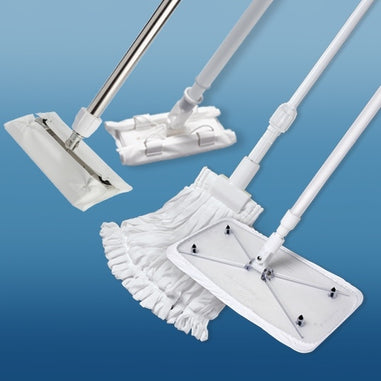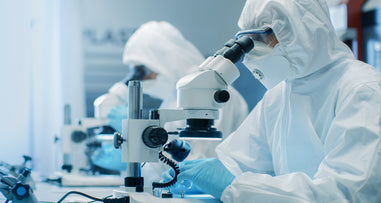- No products in the cart.
In various industries such as pharmaceuticals, electronics, and healthcare, specialized environments are essential to maintain stringent cleanliness standards and prevent contamination. Cleanrooms and controlled environments are two commonly used terms in these fields, but what exactly do they mean, and how do they differ? In this blog post, we will explore the key differences between cleanrooms and controlled environments, shedding light on their distinct purposes and requirements.
Cleanrooms:
Cleanrooms are highly controlled environments designed to minimize the introduction, generation, and retention of airborne particles. These particles can include dust, microorganisms, aerosols, and other contaminants that could compromise sensitive processes or products. Cleanrooms are characterized by their strict air quality standards, typically defined by the maximum allowable particle count per cubic meter of air.
The International Organization for Standardization (ISO) has established the ISO 14644 series of standards, which provide guidelines for cleanroom classifications based on particle concentration. These classifications range from ISO Class 1 (the most stringent) to ISO Class 9 (the least stringent). Cleanrooms are commonly found in industries such as semiconductor manufacturing, pharmaceutical production, and biotechnology research.
Cleanrooms are constructed with specialized materials and undergo meticulous design considerations to control contamination sources. They feature high-efficiency particulate air HEPA (High-Efficiency Particulate Air) or ultra-low particulate air (ULPA) filters that continuously circulate and filter the air, removing particles down to specified sizes. Additionally, cleanrooms incorporate controlled air pressure differentials to prevent contaminants from infiltrating the space.
Cleanroom personnel must adhere to strict protocols, including the use of cleanroom garments such as coveralls, gloves, hoods, and shoe covers, to minimize human-generated contamination. Entry into cleanrooms often involves air showers or gowning areas to further reduce particle introduction. Cleanroom operations require extensive training and are subject to rigorous quality control measures to ensure compliance with cleanliness standards.
Cleanrooms are used in a wide variety of industries, including:
- Pharmaceutical manufacturing
- Medical device manufacturing
- Semiconductor manufacturing
- Food processing
- Microbiology research

Controlled Environments:
Controlled environments, on the other hand, encompass a broader range of environments designed to control multiple variables beyond airborne particles. While cleanliness is still a critical factor, controlled environments focus on maintaining precise control over temperature, humidity, pressure, lighting, and other environmental factors specific to the process or product requirements.
Controlled environments can include temperature-controlled rooms, humidity-controlled chambers, stability rooms, environmental test chambers, and more. These environments are often used in industries such as medical device manufacturing, research and development laboratories, and food processing facilities.
Unlike cleanrooms, controlled environments may not have the same stringent requirements for particle counts or air filtration. Instead, they prioritize other variables that directly impact the quality, efficacy, or safety of the products or processes being conducted. For example, a stability room in the pharmaceutical industry requires precise temperature and humidity control to assess product shelf life accurately.
Personnel working in controlled environments may still follow specific gowning procedures, but the requirements are typically less stringent than those in cleanrooms. Depending on the industry and the nature of the controlled environment, the level of cleanliness and personnel attire may vary.
Controlled environments are used in a wide variety of industries, including:
- Electronics manufacturing
- Aerospace manufacturing
- Chemical manufacturing
- Storage of sensitive materials
- Cultivation of plants or animals
Key Differences:
- Focus: Cleanrooms primarily aim to control airborne particle contamination, while controlled environments encompass a broader range of environmental variables.
- Standards: Cleanrooms adhere to ISO standards for particle counts, whereas controlled environments may have specific requirements based on factors such as temperature, humidity, or lighting.
- Construction: Cleanrooms are constructed with specialized materials, air filtration systems, and pressure differentials, whereas controlled environments may focus on specific environmental controls without the same level of air filtration.
- Personnel Requirements: Cleanroom personnel follow strict gowning protocols and training, while controlled environment personnel may have less stringent attire requirements.
- Industries: Cleanrooms are commonly found in semiconductor manufacturing, pharmaceuticals, and biotechnology, while controlled environments are utilized industries such as medical device manufacturing, research and development laboratories, and food processing.
Here are some additional things to keep in mind when choosing between a cleanroom and a controlled environment:
- The level of control over airborne particles
- The purpose of the space
- The cost of construction and maintenance
- The availability of qualified personnel
In conclusion, while both cleanrooms and controlled environments aim to provide controlled and regulated environments, they differ in their focus and requirements. Cleanrooms prioritize airborne particle control, adhere to specific cleanliness standards, and involve strict gowning protocols. Controlled environments, on the other hand, encompass a broader range of environmental variables, such as temperature, humidity, and lighting, depending on the specific process or product requirements.
By understanding the key differences between cleanrooms and controlled environments, you can make informed decisions when it comes to designing, selecting, or operating these specialized environments. Whether you need to prevent airborne contamination in a cleanroom or maintain precise environmental conditions in a controlled environment, choosing the right solution will contribute to the overall quality, safety, and success of your operations.
For over 40 years, Lab Pro Inc. has been committed to delivering highest quality cleanroom lab supplies, hand tools, lab equipment, chemicals, distance learning kits, and PPE apparel. Renowned by global medical device companies and laboratories, we ensure exceptional quality in every product. Contact us online or call 888-452-2776 to learn more. Discover top-notch lab supplies and elevate your experiments today!



















































